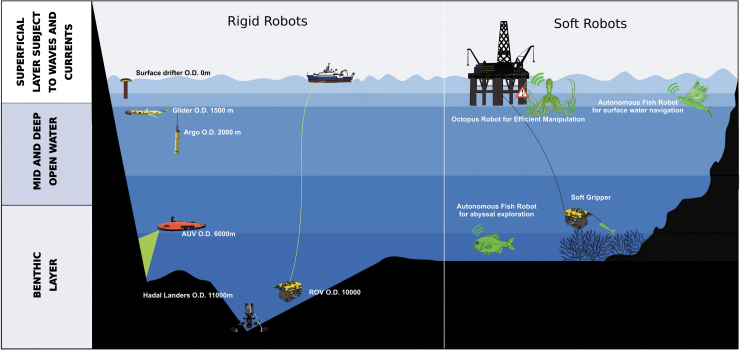FIG. 1.
Distribution of the technology used presently to explore the ocean. Rigid robots are, at present, the majority of the devices, used for marine applications. This figure highlights potential applications where soft robots need to be used, which would be impossible/hard to achieve with rigid robots. The autonomous devices, for example, AUVs, gliders, drifters, and Argo floats, have limited battery life (up to 180 days). In addition to this Argo floats, drifters, and gliders are limited to the surface or the first 2 km of the water column. Only few AUVs in the world can reach 6000 m depth, and they have to follow a predetermined path. ROVs commonly used for seabed exploration and industrial surveys are tethered and need to be constantly remotely operated. Long-distance deep exploration is one of the limitations of currently available technology, where soft robots can come into play. The right panel depicts the present (grippers for coral reef sampling) and future applications of soft robots, all represented in green, as we envisage them. These applications encompass benthic exploration (e.g., autonomous fish robot), surface perturbed water navigation, and near-surface repair operations for offshore platforms. AUV, Autonomous Underwater Vehicle; ROVs, Remotely Operated Vehicles. Color images are available online.

